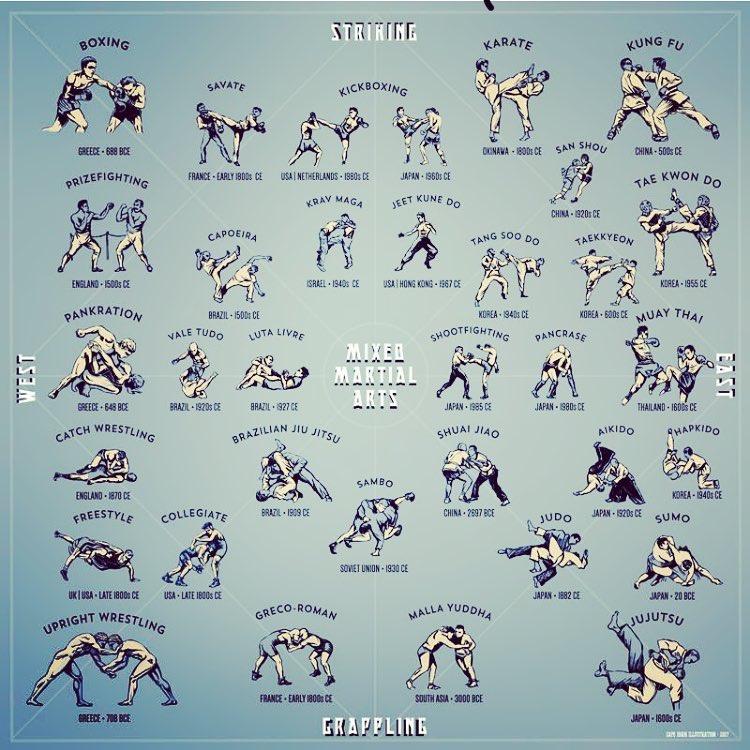The Background And Ideology Of Fighting Style: A Deep Dive
The Background And Ideology Of Fighting Style: A Deep Dive
Blog Article
Content Author-Moesgaard Stokes
Enter the old world where martial arts were born out of necessity in varied regions. https://beckettslvgs.ourcodeblog.com/26625941/discover-necessary-life-skills-and-boost-confidence-through-involvement-in-a-martial-arts-school-what-other-unexpected-benefits-depend-on-store-for-you fighting styles linked with historic contexts. Techniques evolved over centuries via devoted technique and cultural exchanges. Today, modern-day martial arts blend typical elements for maximum performance. Philosophically, martial arts emphasize self-control, self-improvement, and harmony. Regard, humility, and equilibrium are fundamental concepts assisting specialists towards development and durability. Discover the depths of this rich background and ideology to uncover the extensive impacts forming this long-lasting self-control.
Origins of Fighting Style
Martial arts came from various areas worldwide, developing as sensible battle systems to resist risks. These ancient battling designs were created out of requirement, with each society crafting techniques matched to their special environments and obstacles. From the grappling arts of Jujutsu in Japan to the striking methods of Martial art in China, martial arts were deeply intertwined with the historical, social, and social textile of their particular societies.
In Japan, the samurai class refined martial arts like Kenjutsu, the art of the sword, which later on developed into the more promoted type of Kendo. Meanwhile, in Brazil, Capoeira became a mix of dancing and fight, developed by enslaved Africans as a means to resist fascism. https://olympics.com/en/news/jack-woolley-story-of-resilience carries with it an abundant history and philosophy, showing the values and beliefs of the people that exercised them.
As you look into the origins of martial arts, you discover a tapestry of human resourcefulness, resilience, and the unyielding spirit of warriors throughout time.
Advancement of Methods
Through centuries of method and improvement, combat strategies within numerous martial arts have actually undertaken a profound evolution. From old styles like Kung Fu and Karate to extra modern disciplines such as Brazilian Jiu-Jitsu and Krav Maga, the advancement of strategies has actually been driven by a combination of cultural influences, useful applications, and technological advancements.
One significant aspect of this development is the cross-pollination of techniques between different martial arts. For example, strategies from conventional Japanese Jiu-Jitsu were incorporated right into the development of Judo by Jigoro Kano in the late 19th century. This blending of designs has resulted in the development of hybrid martial arts like Mixed Martial Arts (MIXED MARTIAL ARTS), which incorporate aspects of striking, grappling, and submission methods.
In kajukenbo near me , the development of methods has actually been formed by the boosting focus on efficiency and performance in fight. Practitioners have actually continuously looked for to improve their techniques with rigorous training, trial and error, and competitors, bring about the growth of highly specialized and effective battling designs. Generally, the evolution of methods in martial arts reflects the dynamic nature of fight and the continuous pursuit for improvement and innovation.
Philosophical Structures
Exploring the underlying philosophical concepts of martial arts provides insight right into their core values and leading beliefs. At the heart of many martial arts techniques is the principle of self-control itself. By training your mind and body to function as one natural unit, you cultivate discipline that expands beyond the dojo or fitness center right into day-to-day life. This technique incorporates regard, humility, and self-control, shaping not simply your physical capacities yet additionally your character.
An additional fundamental philosophical structure in martial arts is the idea of continuous self-improvement. The trip of mastering a martial art is endless, with practitioners continuously aiming to much better themselves, both physically and psychologically. This focus on development cultivates strength, willpower, and a growth attitude that can be related to all facets of life.
Furthermore, martial arts highlight the relevance of consistency and balance. Methods are developed to make use of a challenger's power against them, highlighting the concept of yielding and redirecting force instead of fulfilling it head-on. This philosophy includes social connections, promoting calm resolutions and good understanding. By welcoming these thoughtful foundations, martial artists not just enhance their combat skills yet likewise cultivate a lifestyle fixated individual development, regard, and harmony.
Conclusion
Finally, the background and approach of martial arts supply a rich tapestry of tradition, discipline, and self-improvement.
Take for example the tale of Bruce Lee, that reinvented martial arts by mixing various styles and approaches to produce his own distinct type of Jeet Kune Do.
Through devotion and development, martial musicians continue to press borders and inspire others to reach their full capacity both in combat and in life.
